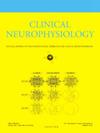GREENBEAN清单用于报告评估脑电图生物标志物有效性的研究
IF 3.6
3区 医学
Q1 CLINICAL NEUROLOGY
引用次数: 0
摘要
数字技术、信号分析和数据科学的进步导致基于脑电图的生物标志物的论文迅速增加。然而,研究设计和报告的广泛异质性对评估这些生物标志物的可靠性、有效性和实用性提出了挑战。在这个不断发展的领域中,最佳实践有时会受到争论,但尚未严格定义,适当的下一步是确保以验证为重点的研究手稿报告已知或怀疑会影响结果的关键方法因素。为了帮助作者设计和报告脑电图生物标志物的验证研究,并帮助编辑和监管机构对其进行评估,在国际临床神经生理学联合会(IFCN)的主持下,一个国际工作组与EQUATOR网络合作,制定了《脑电图/神经生理学生物标志物评估用于神经病学和神经精神病学报告指南》(GREENBEAN)。脑电图生物标志物验证研究与治疗性研究类似,分为四个阶段。第1-2阶段是初步的,不构成正式的验证。3期研究提供了令人信服的有效性证据,而4期研究评估了在现实环境中先前验证的生物标志物的临床实用性和普遍性。我们为每个阶段提供了详细的定义,以及要处理和报告的项目清单。详细的解释和阐述文件包括在补充材料如何设计和报告EEG生物标志物研究的多个例子。我们期望在实验设计和技术标准方面更加透明的报告不仅可以加强短期生物标志物验证工作,还可以加强方法学研究,使未来的工作更加高效和有效。本文章由计算机程序翻译,如有差异,请以英文原文为准。
The GREENBEAN checklist for reporting studies evaluating the effectiveness of EEG-based biomarkers
Advances in digital technology, signal analysis, and data science have led to a rapid increase in papers reporting EEG-based biomarkers. However, wide heterogeneity in study design and reporting poses challenges in assessing the reliability, validity and utility of these biomarkers. In this evolving field, best practices are sometimes debated but not yet rigorously defined, and the appropriate next step is to ensure that validation-focused research manuscripts report key methodological factors that are known or suspected to influence results. To assist authors in designing and reporting validation studies of EEG biomarkers, and to help editors and regulatory bodies evaluate them, an international working group—under the auspices of the International Federation of Clinical Neurophysiology (IFCN) and in collaboration with the EQUATOR Network—developed the Guidelines for Reporting EEG/Neurophysiology Biomarker Evaluation for Application to Neurology and Neuropsychiatry (GREENBEAN). EEG biomarker validation studies are classified into four phases, similarly to therapeutic studies. Phases 1–2 are preliminary and do not constitute formal validation. Phase 3 studies provide compelling evidence of validity, while phase 4 studies assess the clinical utility and generalizability of previously validated biomarkers within real-world settings. We provide detailed definitions for each phase, along with a checklist of items to address and report. A detailed Explanation and Elaboration document is included in Supplementary Material with multiple examples of how to design and report EEG biomarker studies. We expect that more transparent reporting regarding experimental design and technical standards will not only enhance short-term biomarker validation efforts but will also enhance methodological research to make future efforts more efficient and effective.
求助全文
通过发布文献求助,成功后即可免费获取论文全文。
去求助
来源期刊

Clinical Neurophysiology
医学-临床神经学
CiteScore
8.70
自引率
6.40%
发文量
932
审稿时长
59 days
期刊介绍:
As of January 1999, The journal Electroencephalography and Clinical Neurophysiology, and its two sections Electromyography and Motor Control and Evoked Potentials have amalgamated to become this journal - Clinical Neurophysiology.
Clinical Neurophysiology is the official journal of the International Federation of Clinical Neurophysiology, the Brazilian Society of Clinical Neurophysiology, the Czech Society of Clinical Neurophysiology, the Italian Clinical Neurophysiology Society and the International Society of Intraoperative Neurophysiology.The journal is dedicated to fostering research and disseminating information on all aspects of both normal and abnormal functioning of the nervous system. The key aim of the publication is to disseminate scholarly reports on the pathophysiology underlying diseases of the central and peripheral nervous system of human patients. Clinical trials that use neurophysiological measures to document change are encouraged, as are manuscripts reporting data on integrated neuroimaging of central nervous function including, but not limited to, functional MRI, MEG, EEG, PET and other neuroimaging modalities.
 求助内容:
求助内容: 应助结果提醒方式:
应助结果提醒方式:


